Bearded Dragons: Nature’s Spiky Superstars!
Bearded Dragons, belonging to the genus Pogona in the lizard group Agamidae, are fascinating creatures. They have broad triangular heads, flattened bodies, and spiny scales covering their entire bodies. When threatened, they puff up their bodies and beards to deter predators.
Bearded dragons communicate through hand-waving gestures to show submission and head-bobbing displays to establish dominance. They can also change color slightly in response to challenges and temperature variations.
With a wide range of colors and morphs, these dragons captivate with their unique appearances. Males grow up to 60 cm (24 in) long, while females reach about 51 cm (20 in). Bearded Dragons are a captivating blend of beauty and fascinating behaviors.
About Bearded Dragons
| Characteristic | Bearded Dragons |
|---|---|
| Scientific Name | Pogona |
| Family | Agamidae |
| Type | Reptile |
| Order | Squamata |
| Temperament | Docile and friendly |
| Lifespan | 10 to 15 years |
| Size | Length: 40 to 60 cm (16 to 24 inches) |
| Weight | 350 to 600 grams (0.8 to 1.3 lbs) |
| Diet | Omnivorous, insects, vegetables, fruits |
| Distribution | Arid regions of Australia |
| Habitat | Forests, deserts, grasslands |
| Species | Eastern Bearded Dragon (Pogona barbata), Inland Bearded Dragon (Pogona vitticeps), Rankin’s Dragon (Pogona henrylawsoni) |
| Other names | None widely recognized |
Physical Characteristics of Bearded Dragons
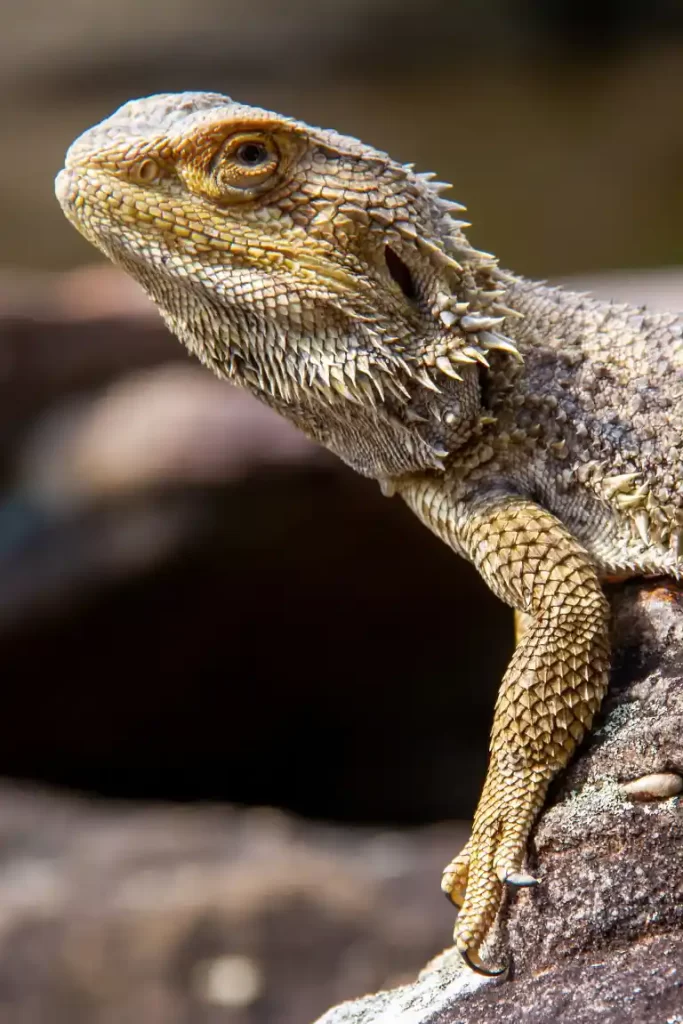
Bearded Dragons, belonging to the genus Pogona and the subfamily Amphibolurinae of the lizard group Agamidae, possess a fascinating array of physical characteristics that contribute to their unique appearance. Let’s delve into each aspect in more detail:
Head and Facial Features
Bearded Dragons have distinctively broad and triangular heads. Their faces are adorned with several remarkable features. One of the most prominent is their “beard,” a collection of spiny scales located beneath their chin.
When threatened or displaying dominance, they can puff up their beard, creating an imposing visual display. Their heads also house well-developed jaws equipped with sharp teeth, enabling them to chew and consume their prey effectively.
Body Structure and Scales
The body of a Bearded Dragon is characterized by a flattened profile. This adaptation allows them to effectively regulate their body temperature by maximizing surface area exposure. Their bodies are covered in rows and clusters of spiny scales, which provide both protection and a unique textured appearance. These scales can vary in color and pattern, further adding to the individuality of each Bearded Dragon.
Limbs and Claws
Bearded Dragons have four well-developed limbs, each ending in sharp claws. These claws serve multiple purposes, including gripping surfaces, climbing, and digging. Their limbs are strong and agile, allowing them to move swiftly and with precision.
Tail: One of the notable features of Bearded Dragons is their long, tapering tail. The tail serves several functions, including balance and fat storage. During periods of food scarcity, Bearded Dragons can rely on the fat reserves stored in their tails to sustain their energy needs.
Coloration and Morphs
Bearded Dragons exhibit a wide range of color variations and morphs. Their natural coloration can include shades of brown, tan, yellow, orange, and even hints of red. Controlled breeding efforts have resulted in the development of various morphs, each with its unique color patterns and traits.
From hypo (reduced pigmentation) to translucent (semi-transparent scales), these morphs showcase the remarkable diversity within the Bearded Dragon population.
Size and Sexual Dimorphism
The size of Bearded Dragons can vary depending on factors such as genetics, diet, and overall health. Males typically grow larger than females, with adult males reaching lengths of up to 60 cm (24 inches) from snout to tail tip.
Females, on the other hand, tend to be slightly smaller, averaging around 51 cm (20 inches) in length. It’s important to note that providing adequate space and a proper habitat is crucial for the healthy growth and well-being of these reptiles.
Defense Mechanism of Bearded Dragons
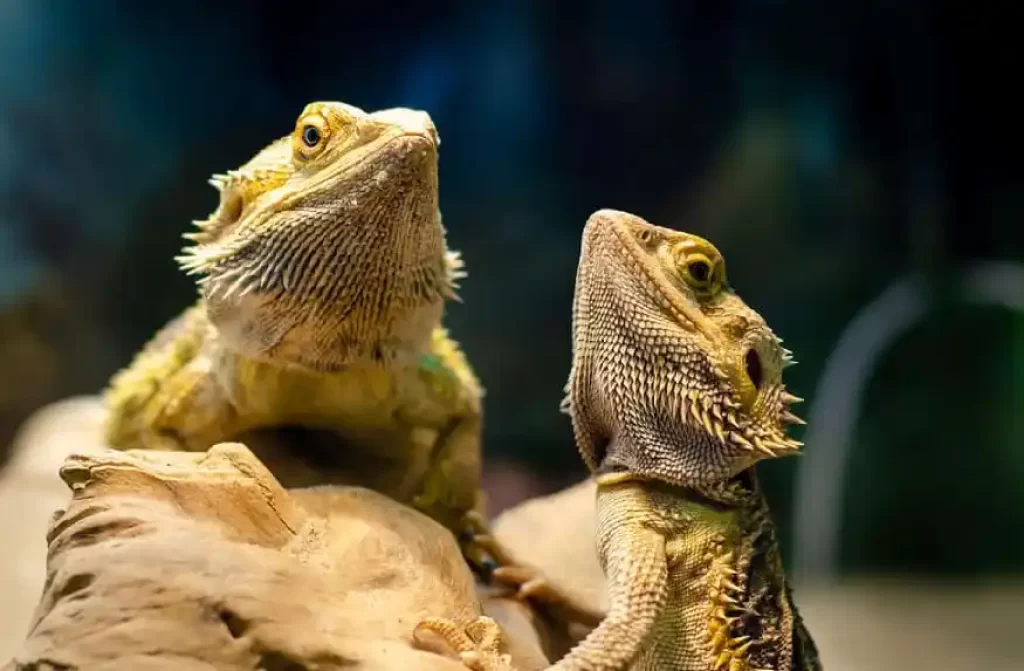
Bearded Dragons possess a remarkable defense mechanism that helps them ward off potential threats. When faced with danger, they have the ability to employ several tactics to intimidate predators and protect themselves. keep reading to explore their defense mechanisms in more detail:
Body Puffing
When a Bearded Dragon feels threatened, it has the remarkable ability to puff up its body. By inflating itself, it appears larger and more intimidating to potential predators. This body puffing is achieved by expanding its lungs and muscular contractions, giving the illusion of increased size and presence.
Beard Display
One of the most visually striking aspects of a Bearded Dragon’s defense is its beard. Located beneath its chin, the beard is composed of spiny scales.
When a Bearded Dragon feels threatened or wants to assert dominance, it can extend and darken its beard. This display serves as a warning sign to predators, indicating that the dragon is ready to defend itself.
Spiky Appearance
Although the spikes on a Bearded Dragon may appear somewhat dull compared to other reptiles, such as a thorny dragon, they still contribute to its overall defense mechanism. When a Bearded Dragon puffs up its body and extends its beard, the presence of these spikes adds an additional deterrent.
Predators may be dissuaded from attacking due to the perception of potential harm or discomfort.
By combining the strategies of body puffing, beard display, and a spiky appearance, Bearded Dragons effectively ward off predators and enhance their chances of survival. These defense mechanisms not only create a visually intimidating display but also serve as a warning signal to potential threats in their environment. It’s a fascinating adaptation that showcases the resourcefulness and resilience of these reptiles.
Habitat
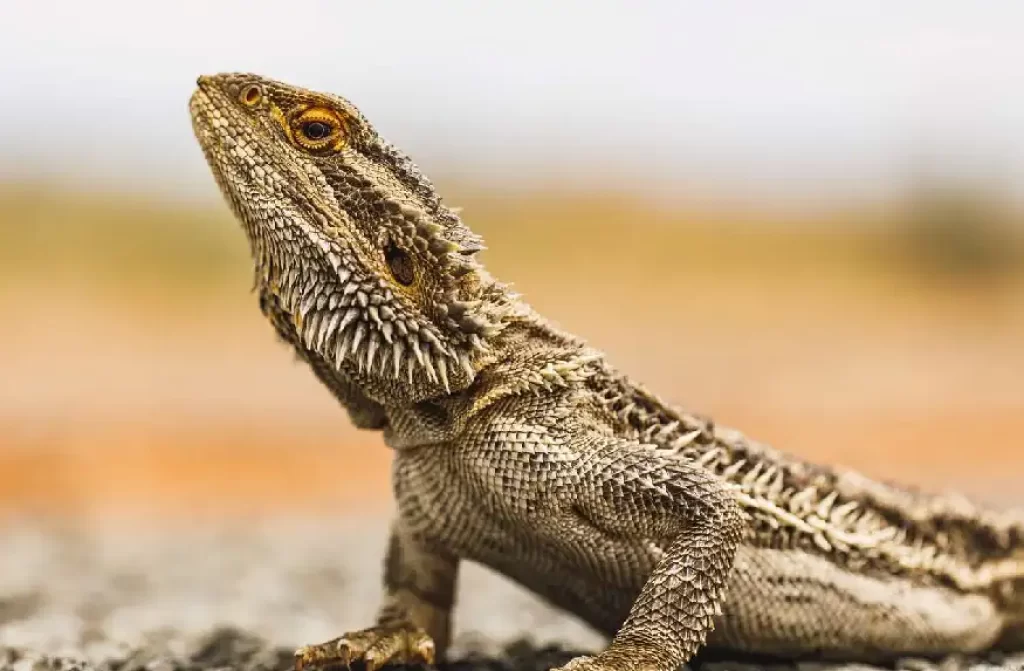
Bearded dragons are fascinating reptiles that inhabit deserts and other dry areas in Australia. They have adapted to survive in various environments, including arid and subtropical woodlands, scrublands, savannas, shore areas, and even the vast interior deserts. Let’s explore their habitat in more detail.
Range and Distribution
Bearded dragons are found throughout the interior of the eastern states of Australia, extending to the eastern half of South Australia and southeastern Northern Territory. The different species of bearded dragons occupy slightly overlapping areas within this landmass.
Semiarboreal Nature
Bearded dragons are considered semiarboreal, which means they have the ability to climb and bask at different heights. This behavior is linked to dominance and territorial competition. They can often be observed perching on fallen or broken trees, rocky outcrops, and bushes while basking in the sun.
Brumation
Similar to hibernation, bearded dragons undergo a period called brumation. During brumation, reptiles experience a state of reduced activity and metabolism. For bearded dragons, brumation occurs in response to extreme temperatures.
When the climate becomes too hot, they seek refuge by burrowing underground or finding covered hiding places.
Temperature Requirements
Bearded dragons have specific temperature requirements for their activity and well-being. They enter brumation when the temperature drops below 15.5–21.0°C (60–70°F) at night and remains between 24.0–26.5°C (75–80°F) during the day for 8-10 hours. This temperature range allows them to conserve energy and adapt to the changing environmental conditions.
Burrowing and Shelter
Bearded dragons exhibit natural behaviors of burrowing and seeking shelter. They create burrows and find covered hiding places to protect themselves from the climate changes, especially during the night. These burrows and hiding spots provide them with a safe and suitable microclimate where they can regulate their body temperature and seek refuge from predators.
Behavior of Bearded Dragons
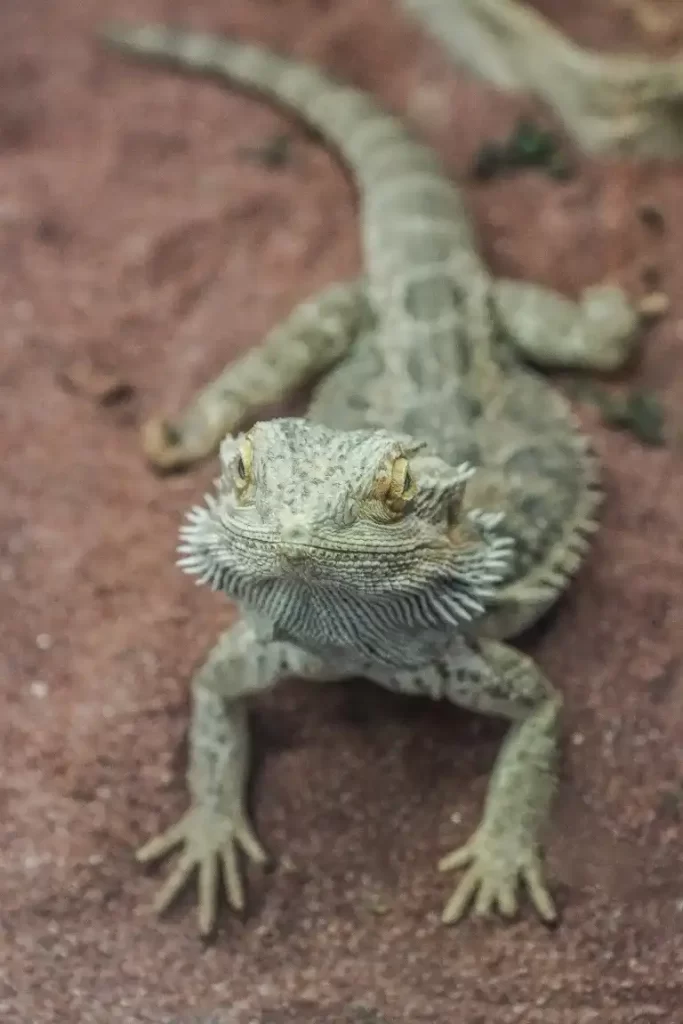
Bearded dragons exhibit a range of fascinating behaviors that play significant roles in their social interactions, communication, and survival strategies. Let’s delve into some of the intriguing behaviors displayed by these reptiles:
Territoriality
Adult bearded dragons are highly territorial creatures. As they mature, they establish territories where they engage in displays of aggression and appeasement as part of their social interactions.
Dominant males assert their dominance through posturing and may even engage in fights to defend their territory or compete for mates. Males will perceive any approaching male without submissive behavior as a challenge to their territory.
Mouth Gaping and Extreme Behavior
When threatened, bearded dragons exhibit defensive behaviors to deter predators.
They may open their mouths and gape while inflating their bodies and tilting towards the threat. Hissing can also be observed as a warning sign. Although bearded dragons possess relatively powerful jaws, they generally resort to biting only as a final option when confronted with threats unrelated to intraspecies competition.
Head Bobbing
Head bobbing is a common behavior seen in both male and female bearded dragons. This rapid up-and-down movement of the head is accompanied by darkening and flaring of the beard. Head bobbing serves as a form of communication, with different pacing conveying various messages.
Males often head bob to impress females and establish dominance before mating. Smaller males may respond to head bobbing from larger males with arm waving, a submissive gesture. Females may also arm wave to avoid aggression and appease dominant males.
Illusion Perception
Bearded dragons have demonstrated the ability to perceive illusions, specifically the Delboeuf illusion, in an experiment conducted at the University of Padova. They were able to distinguish between two differently sized plates with the same amount of food and showed a preference for the smaller plate.
This behavior suggests that bearded dragons possess the cognitive ability to understand that plate size does not necessarily indicate more food. This is the first evidence of such behavior observed in a reptile species.
The behaviors exhibited by bearded dragons highlight their complex social dynamics, communication methods, and cognitive capabilities. Understanding these behaviors helps us appreciate the fascinating nature of these reptiles and provides valuable insights into their natural instincts and adaptations
Coloration and Morphs of Bearded Dragons
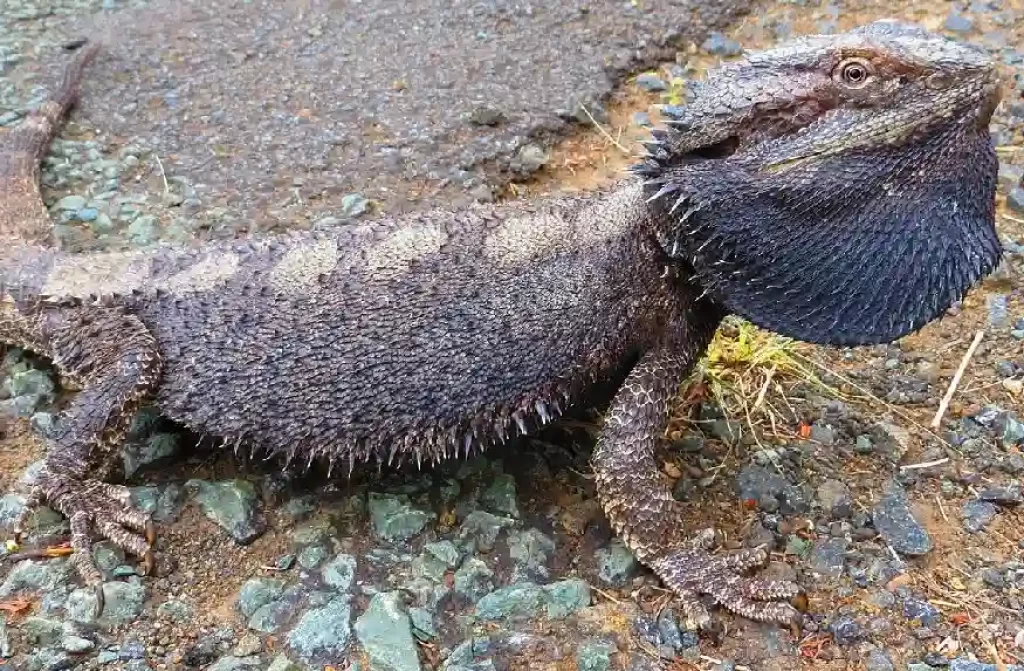
The coloration and morphs of Bearded Dragons contribute to their visual appeal and showcase their remarkable diversity. Let’s explore this captivating aspect of these reptiles:
Color Change
Bearded Dragons have the ability to undergo slight color changes, particularly during rivalry challenges between males or in response to ambient temperature variations.
Some individuals may darken their coloration to absorb heat more effectively, allowing them to regulate their body temperature. This adaptive response highlights the remarkable thermoregulatory abilities of these reptiles.
Variety of Colors
Bearded Dragons exhibit a wide range of colors, adding vibrancy and individuality to their appearance. They can be found in various hues, including shades of brown, tan, yellow, orange, and red.
Some individuals may even display patterns and markings that further enhance their unique coloration. This natural variation in colors is a testament to the diverse genetic makeup within the Bearded Dragon population.
Morphs through Breeding
Through controlled breeding efforts, breeders and enthusiasts have expanded the color palette and morphs available in Bearded Dragons. By selectively breeding individuals with specific color traits, they have achieved extraordinary results.
This controlled breeding has led to the development of distinct morphs, such as hypo, translucent, citrus, leatherback, and many more. Each morph exhibits unique color patterns, scales, and overall appearance, making them highly sought after by reptile enthusiasts.
The captivating ability of Bearded Dragons to change color, combined with the wide variety of colors and the creation of morphs through controlled breeding, showcases the endless possibilities and beauty within this species.
The diverse coloration and morphs of Bearded Dragons add to their allure and make them fascinating pets for those who appreciate their remarkable visual aesthetics.
Reproduction
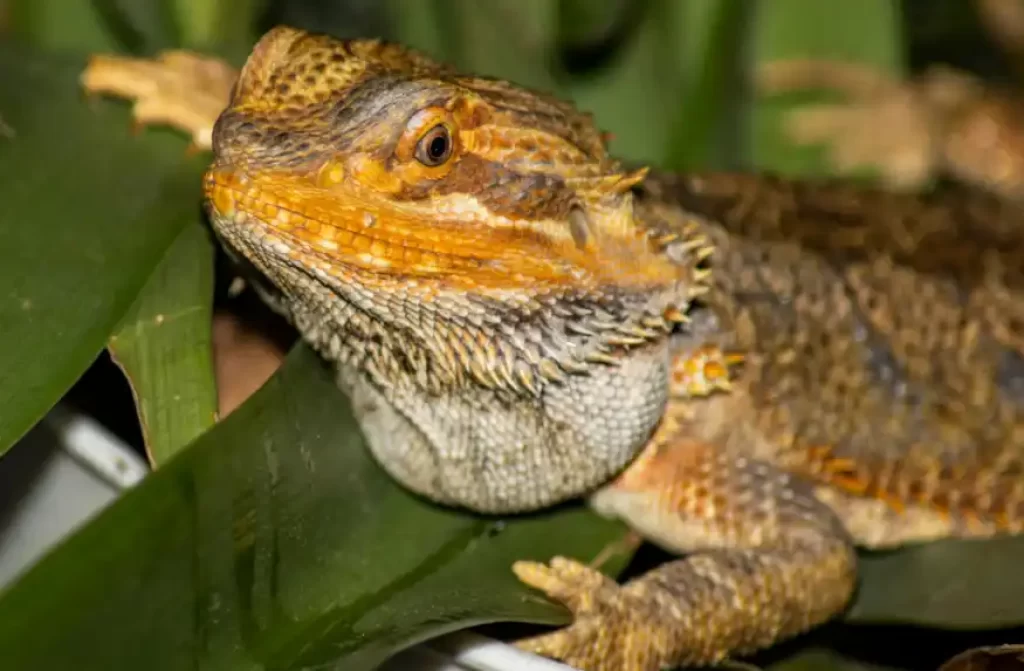
Let’s talk about how bearded dragons make more bearded dragons! Reproduction in these reptiles involves courtship rituals, mating, and egg-laying. They have some interesting behaviors and adaptations that help them in this process.
However, there can also be some unique challenges and anomalies along the way. So, let’s delve into the fascinating world of bearded dragon reproduction and learn more about their fascinating life cycle.
Courtship Rituals
During the mating season, male bearded dragons engage in elaborate courtship rituals to attract a female. These rituals involve head bobbing, arm waving, and foot stomping as displays of dominance and readiness to mate. The male may also chase the female and gently bite the back of her neck to assert his position.
Sperm Storage
Female bearded dragons have a unique reproductive capability – they can store sperm in their oviductal crypts. This allows them to lay multiple clutches of eggs from a single mating. The stored sperm can be utilized for fertilization over an extended period, enabling the female to produce several batches of eggs without the need for repeated mating.
Egg Laying
Once fertilization occurs, the female bearded dragon develops and incubates a clutch of eggs. A typical clutch can consist of 11 to 30 eggs. The female carefully prepares a nesting site, digging a burrow or finding a suitable spot to deposit her eggs. She lays the eggs and covers them with sand or other nesting material for protection.
Temperature Sex Determination
Bearded dragons exhibit temperature sex determination, where the incubation temperature during development determines the offspring’s sex. Higher temperatures can result in sex reversal, where embryos with a male genotype develop as females.
Incubation temperatures above 31°C have the potential to trigger this phenomenon, while temperatures below 31°C do not cause sex reversal.
Unfertilized Eggs
Interestingly, female bearded dragons have the ability to lay unfertilized eggs, known as “parthenogenesis.” These eggs are slightly smaller and softer compared to fertilized eggs. Although these eggs are not viable and will not hatch, the female can still produce them without the need for mating.
Pogona’s feeding Habits in the Wild
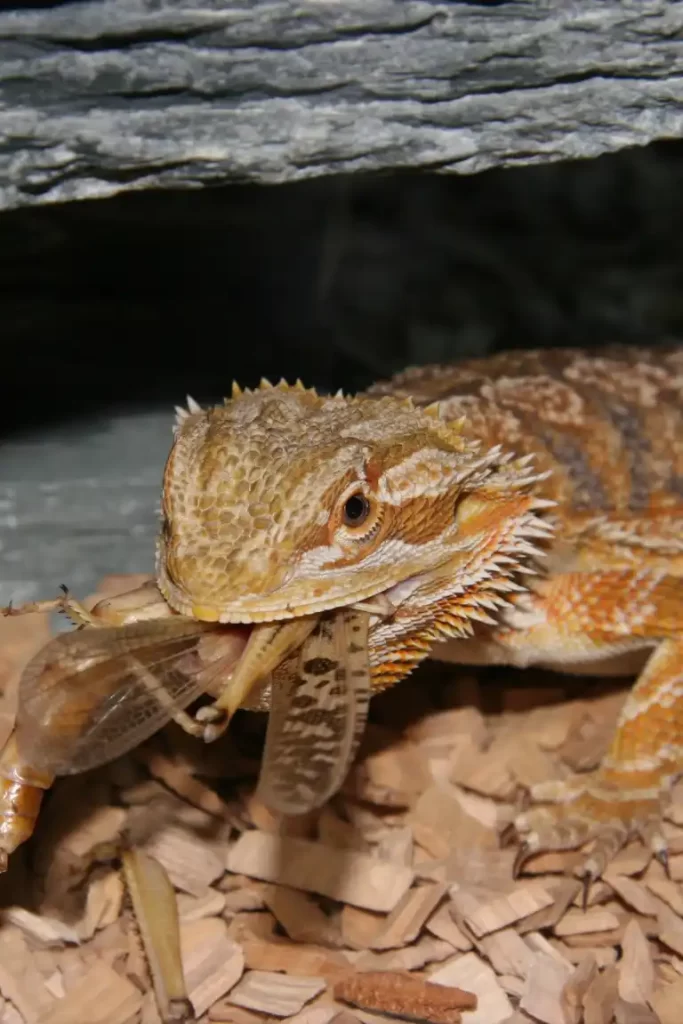
In the wild, bearded dragons are opportunistic omnivores, which means they eat a variety of foods depending on what is available in their natural habitat. Here’s a breakdown of their feeding habits in the wild:
Insects and Invertebrates
Insects form a significant portion of a wild bearded dragon’s diet. They actively hunt and consume a wide range of insects, including crickets, grasshoppers, beetles, termites, ants, spiders, and occasionally even small lizards or rodents. These protein-rich prey items provide essential nutrients and energy for their survival.
Vegetation and Greens
While insects make up a large part of their diet, wild bearded dragons also consume vegetation and greens. They feed on a variety of plant materials, including leaves, flowers, buds, and fruits.
They may browse on grasses, herbs, shrubs, and other vegetation available in their habitat. This plant matter contributes to their dietary fiber and provides additional nutrients.
Seasonal Variation
The availability of food sources in the wild varies with the seasons. During warmer months when insects are abundant, bearded dragons rely more heavily on a protein-rich diet.
As the seasons change and insect availability decreases, they adapt by incorporating more vegetation into their diet. This natural dietary variation helps them meet their nutritional needs throughout the year.
Hydration
In the wild, bearded dragons obtain a significant portion of their hydration from the food they consume. Insects and vegetation have moisture content, which helps fulfill their water requirements.
However, they may also actively seek out water sources such as puddles, shallow pools, or even lick dew from leaves to supplement their hydration needs.
Foraging and Feeding Behavior
Bearded dragons are active foragers in the wild. They use their keen eyesight to spot potential prey items and vegetation.
They may climb, dig, or explore various microhabitats in search of food. Bearded dragons also exhibit natural feeding behaviors, including stalking, pouncing, and capturing prey. They use their strong jaws and sharp teeth to consume both insects and vegetation.
How often should Bearded Dragons be fed?
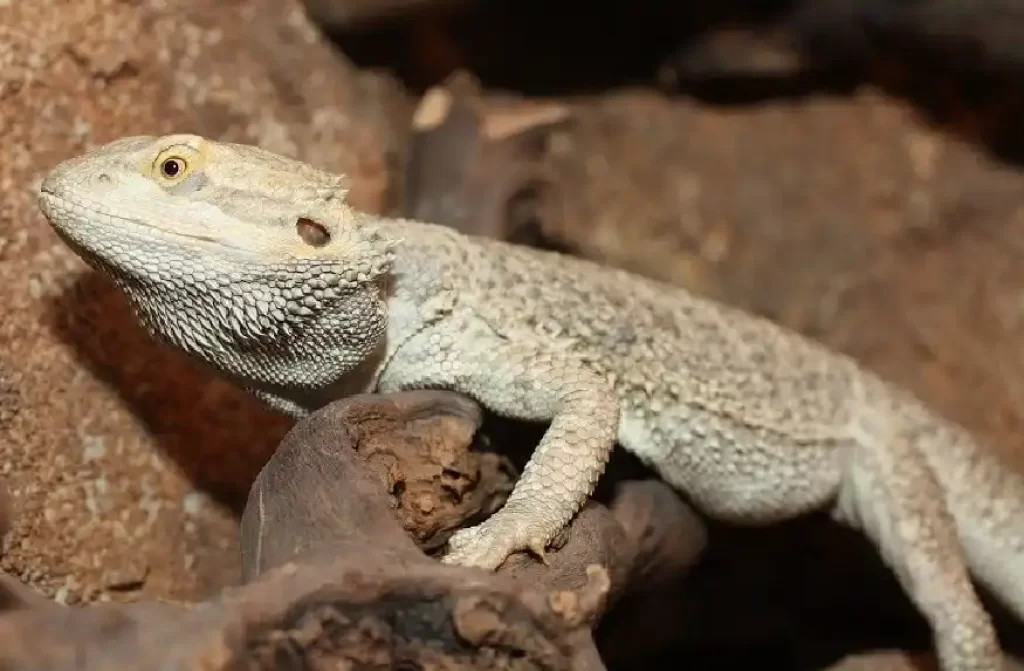
Bearded dragons have specific dietary requirements that need to be met for their overall health and well-being. Understanding how often to feed them is an essential aspect of their care. Here is a breakdown of the feeding frequency for bearded dragons, taking into account their age and nutritional needs.
01. Juvenile Bearded Dragons (0-6 Months)
During the juvenile stage, bearded dragons experience rapid growth and require more frequent feedings to support their development. Here’s a recommended feeding schedule:
- Offer small, appropriately sized insect feedings 2-3 times a day.
- Aim to provide a variety of insects, including crickets, dubia roaches, and mealworms, to ensure a balanced diet.
- Vegetables and leafy greens should also be introduced during this stage, starting with small portions.
02. Sub-Adult Bearded Dragons (6-12 Months)
As bearded dragons transition into the sub-adult stage, their growth rate slows down, and their feeding frequency can be adjusted accordingly:
- Offer insect feedings once a day, providing an adequate number of insects based on their size and appetite.
- Continue to offer a variety of insects to ensure proper nutrition.
- Vegetables and leafy greens should make up a significant portion of their diet, along with occasional fruits as treats.
03. Adult Bearded Dragons (1 Year and Older)
Once bearded dragons reach adulthood, their feeding frequency decreases further as their growth rate stabilizes. Here’s a general feeding schedule for adult bearded dragons:
- Offer insect feedings every other day or three times a week.
- Vegetables and leafy greens should make up the bulk of their diet, supplemented with occasional fruits as treats.
- Monitor their weight and adjust the portion sizes as needed to prevent obesity.
These feeding guidelines serve as a general reference. Each bearded dragon is unique, and their dietary needs may vary slightly.
You might also like: What Foods should be Avoided when Feeding Bearded Dragons?
Common Health Issues in Bearded Dragons
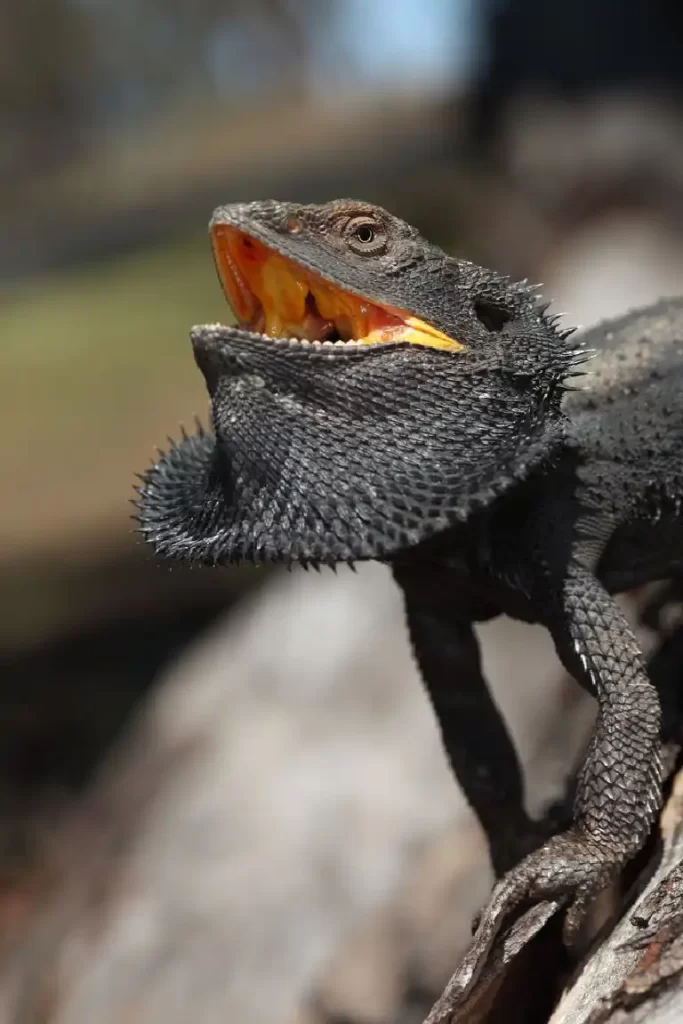
Bearded dragons are generally hardy reptiles, but they can still experience health issues if not provided with proper care. Here are some common health problems that may affect bearded dragons:
Metabolic Bone Disease (MBD)
MBD is a prevalent and potentially fatal condition in bearded dragons. It results from a lack of calcium, vitamin D3, or improper lighting. Signs of MBD include weakened skeletal structure, deformities, bumps on the legs or spine, swollen jaw, and twitching movements.
Hypocalcemia
Hypocalcemia refers to low levels of calcium in the blood. It is often associated with metabolic bone disease and can lead to muscle twitching and seizures. Maintaining a calcium-rich diet is crucial for preventing hypocalcemia.
Impaction
Bearded dragons can develop impaction when they ingest food that is too large or when they consume loose substrates, such as sand. Impaction can put pressure on the spinal cord during digestion and may result in serious health complications or even death.
Upper Respiratory Infection (URI)
URI in bearded dragons is caused by bacterial infections in the lungs. It can be triggered by factors like incorrect lighting and temperature, high humidity, stress, and poor living conditions.
Atadenovirus (ADV)
ADV is a viral disease that can be deadly for bearded dragons. It spreads through direct contact and can cause stunted growth, slow weight gain, and liver diseases. Juvenile bearded dragons affected by ADV often have a short life expectancy.
Lighting
Proper lighting is crucial for bearded dragons’ health. They require UVB light to synthesize vitamin D3 and absorb calcium effectively. UVA light is also essential for their overall well-being, as it stimulates feeding, breeding, basking, and other vital functions.
It’s important to provide a well-balanced diet, proper lighting, and a clean living environment to prevent these health issues in bearded dragons. Regular veterinary check-ups and attentive care can help ensure the well-being and longevity of your beloved reptile companion.
Do Bearded Dragons require any supplements?
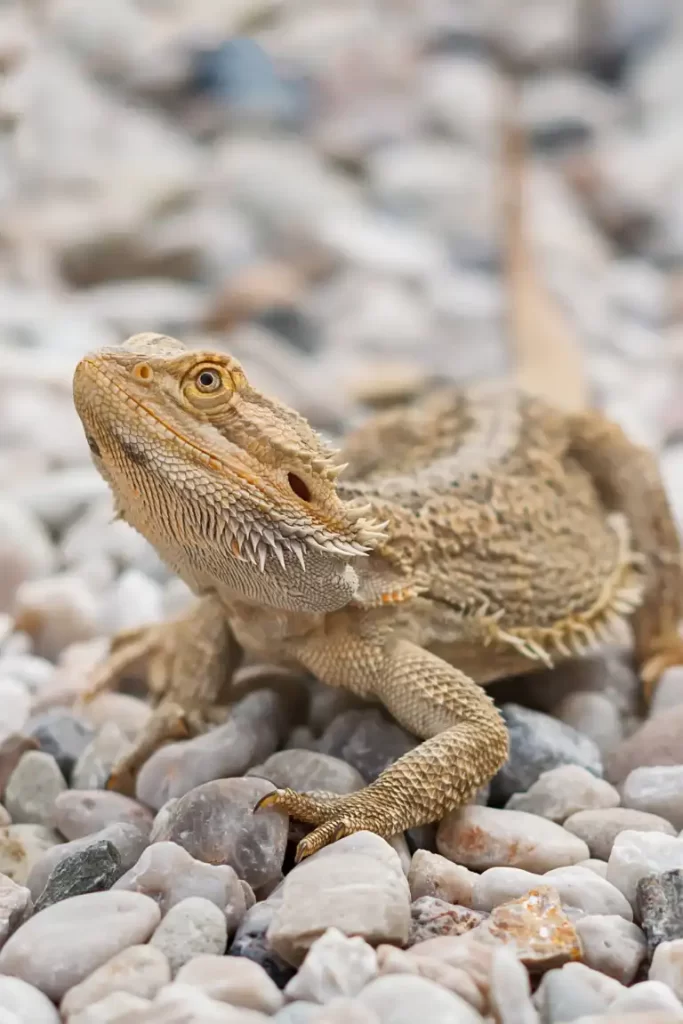
Yes, Bearded Dragons do require supplements to ensure they receive all the necessary vitamins and minerals. Here are the primary supplements recommended for Bearded Dragons:
Calcium Supplement
Calcium is crucial for the development and maintenance of strong bones and overall health. Bearded Dragons need calcium supplementation to prevent metabolic bone disease. Dust their food with a calcium supplement that contains vitamin D3 at least three times a week. Choose a calcium powder specifically formulated for reptiles.
Multivitamin Supplement
In addition to calcium, Bearded Dragons benefit from a multivitamin supplement. This helps provide a broader range of essential vitamins and minerals. Use a reptile-specific multivitamin powder and dust their food with it once or twice a week. Make sure the multivitamin does not contain added calcium if you’re already providing calcium supplements separately.
When supplementing, it’s important to consider the following:
- Use calcium without vitamin D3 for the remaining dustings to avoid overdosing on vitamin D3.
- Younger dragons require more frequent supplementation than adults due to their higher growth rates.
- Pregnant or breeding females may have specific supplementation needs, so consult a reptile veterinarian for guidance.
Supplements should be dusted onto the insects or vegetables that you offer to your Bearded Dragon. The process involves lightly coating the food items before feeding them to your pet. This ensures they ingest the necessary nutrients.
Diverse Bearded Dragon Species: Exploring the Unique Varieties
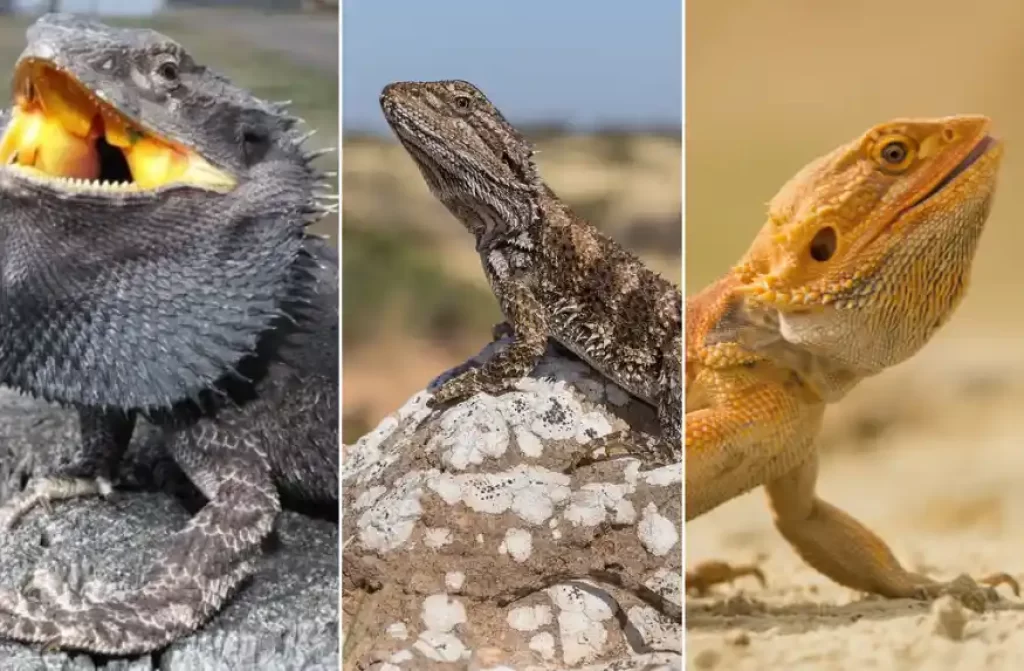
The fascinating world of bearded dragons encompasses several distinct species. Here, we will explore the six recognized species and their scientific names:
Pogona barbata (Cuvier, 1829) – Eastern Bearded Dragon
Also known as the Eastern Bearded Dragon, this species is native to the eastern regions of Australia. It is characterized by its impressive beard and is one of the most common and widely recognized species of bearded dragons.
Pogona henrylawsoni (Wells & Wellington, 1985) – Rankin’s Dragon
Rankin’s Dragon, also referred to as Lawson’s Dragon, black-soil bearded dragon, dumpy dragon, or dwarf bearded dragon, is a smaller species of bearded dragon. It is named after Henry Lawson, an Australian poet.
Pogona microlepidota (Glauert, 1952) – Kimberley Bearded Dragon
The Kimberley Bearded Dragon, also known as the Drysdale River Bearded Dragon, is found in the Kimberley region of Western Australia. It is distinguished by its unique patterns and coloration.
Pogona minor (Sternfeld, 1919) – Western Bearded Dragon
The Western Bearded Dragon, or dwarf bearded dragon, is a smaller species that inhabits the western parts of Australia. It is known for its compact size and vibrant coloration.
Pogona nullarbor (Badham, 1976) – Nullarbor Bearded Dragon
The Nullarbor Bearded Dragon is named after the Nullarbor Plain, a vast arid region in Australia. It is endemic to this area and has adapted to the unique conditions of the Nullarbor region.
Pogona vitticeps (Ahl, 1926) – Central Bearded Dragon or Inland Bearded Dragon
The Central Bearded Dragon, also referred to as the Inland Bearded Dragon, is one of the most popular and widely kept species in captivity. It is found in the central regions of Australia.
FAQ:
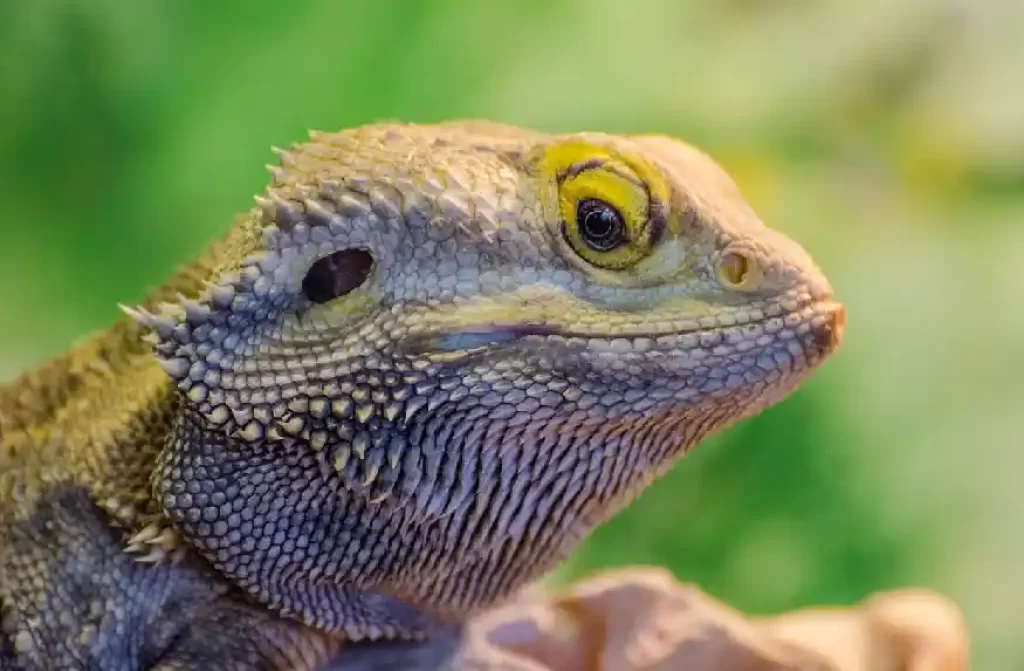
How big do Bearded Dragons typically grow?
Bearded Dragons can vary in size depending on their species and individual genetics. On average, adult Bearded Dragons can reach a length of 16 to 24 inches (40 to 60 centimeters) from their snout to the tip of their tail. However, some individuals may grow even larger, especially if they are well-nourished and provided with proper care.
What are the different morphs or color variations of Bearded Dragons?
Bearded Dragons exhibit a wide range of color variations and morphs, which have been achieved through selective breeding efforts. Common color variations include shades of brown, tan, yellow, and orange.
Some morphs display unique patterns, such as citrus, hypo, translucent, leatherback, and silkback. Each morph or color variation has its own distinct appearance, making Bearded Dragons visually diverse and captivating pets.
What kind of habitat do Bearded Dragons require?
Bearded Dragons are native to arid and subtropical regions of Australia, so their habitat should mimic these conditions. A suitable enclosure for a Bearded Dragon should have a spacious tank or terrarium with a secure lid to prevent escapes.
The habitat should include a temperature gradient, with a basking spot reaching around 95-100°F (35-38°C) and a cooler side around 75-85°F (24-29°C). Additionally, providing a UVB light source is essential for proper calcium absorption and overall health.
What is the ideal temperature and humidity range for Bearded Dragons?
Bearded Dragons require specific temperature and humidity conditions to thrive. During the day, the basking area should be maintained at 95-100°F (35-38°C), while the cooler side of the enclosure can be around 75-85°F (24-29°C).
At night, the temperature can drop to around 70-75°F (21-24°C). As for humidity, Bearded Dragons thrive in relatively low humidity environments of around 30-40%. It is important to monitor and regulate these conditions to ensure the well-being of your pet.
What should be included in a Bearded Dragon’s diet?
A healthy and balanced diet for Bearded Dragons consists of a variety of insects, leafy greens, and occasional fruits. Their primary source of protein comes from insects like crickets, mealworms, dubia roaches, and phoenix worms.
Additionally, leafy greens such as collard greens, mustard greens, and dandelion greens should make up a significant portion of their diet. It is crucial to provide proper supplementation, including calcium and vitamin D3, to prevent nutritional deficiencies.
Can Bearded Dragons eat fruits and vegetables?
Yes, Bearded Dragons can eat a variety of fruits and vegetables, but they should be offered in moderation. Some suitable options include diced or pureed fruits like strawberries, blueberries, papaya, and mango. Vegetables like squash, bell peppers, carrots, and green beans can also be included.
However, it’s important to avoid feeding them toxic or potentially harmful foods, such as avocado, citrus fruits, and onions. Remember to always provide a well-balanced diet with a focus on appropriate protein and greens.
Why can’t bearded dragons eat chicken?
Bearded dragons are primarily insectivorous reptiles and have specific dietary needs. While they can eat a variety of protein sources, chicken is not recommended as a regular part of their diet.
Chicken is higher in fat, lacks essential nutrients like calcium, and can strain their kidneys and liver due to its high protein content. There is also a risk of bacterial contamination.
Stick to their natural diet of insects, leafy greens, and vegetables to ensure their health and well-being. If introducing new foods, consult a reptile veterinarian for guidance.
References:
- Wikipedia – Pogona: https://en.wikipedia.org/wiki/Pogona
- National Geographic – Bearded Dragon Facts: https://www.nationalgeographic.com/animals/reptiles/facts/bearded-dragon







